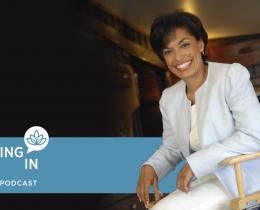Our approach to resilience differs from traditional notions of resilience in an important respect. When we tell people that our work is about helping our clients stay resilient, they often say, “I know someone who is very resilient; she bounced back from ___________.” You can fill in the blank: cancer, hurricane, divorce, or any other major ordeal that qualifies as something difficult to recover from. These extreme scenarios can be devastating, and a lot of support is available to help you manage these catastrophic events. But instead of taking the macro view of resilience—the long view, encompassing a process that often takes many years—we chose to exclusively study the day-by-day, hour-by-hour challenges of resilience.
What Tennis Champions Teach Us About Stress Recovery
Our focus is on the ordinary interactions with friends, family, and coworkers that throw us into conscious or unconscious turmoil. For most of us, the hundreds of miniature bruises we experience each day determine the overall quality of our lives far more dramatically than the giant traumas that punctuate the decades.
Research conducted by Dr. James Loehr—a respected sports psychologist, author of The Power of Full Engagement, and the founder of the Johnson & Johnson Human Performance Institute in Orlando, Florida—intrigued us. Jim decided to find out what he could learn by studying athletes who dominated the world-class tennis circuit. He wanted to understand why there were hundreds of players on international tours but only a handful of champions who consistently took home the trophies.
What made the difference for the athletes in this top tier? What are the habits that enable breakthrough performance under intense competitive pressure? Jim performed all sorts of analyses, but to his frustration, he couldn’t find any consistent differences among the best players.
Until he looked at what they did between the points. A pattern jumped out immediately. As he sifted through several hours of video, Jim noticed that the top athletes exhibited very similar habits when they returned to the baseline after scoring and when they retired courtside between games and sets. These distinct, identifiable between-the-points behaviors were common to the winners and centered on energy recovery and positive focus. Jim put heart-rate monitors on these top players and found that they were able to bring their heart rates back to an ideal zone more quickly and efficiently than less successful competitors. The further he went down the list of seeded players, the more dramatic the differences were.
Those at the bottom of the list employed almost none of these rejuvenating behaviors. They stayed keyed up, tense, and even distracted in the sixteen to twenty seconds that normally elapse between a point scored and the following serve.
Jim used his discoveries to revolutionize sports training. He developed a series of focus exercises and relaxation techniques that teach players to shake off mistakes, release tension, project a confident image to their opponents, and establish rituals to increase consistency. Jim’s program, called the 16‑Second Cure, is now an essential element of tennis coaching throughout the world.
From Athletes to Everyday Life: Micro-Resilience for All
Jim and his tennis players really got us thinking. He learned that by the last set of a three-hour tennis match, the competitor who had been using small, sometimes barely noticeable mini recoveries—what we began to call micro-resilience—between the points was likely to play much closer to the best of his or her ability than the player who didn’t. We began to think that micro-resilience was more than a way to help professional athletes recover energy on the tennis court: it also could help the rest of us develop the kinds of comeback skills we need to combat the blitzkrieg of stress in our lives.
What if we all could stay closer to playing our A game all day, every day, by recharging our batteries as we go?



